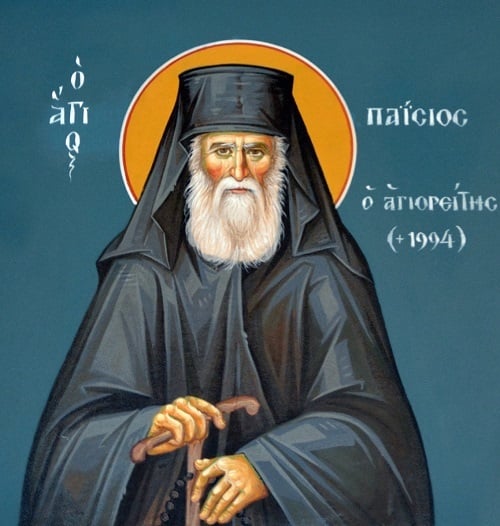Saint Vlasios from Sklavaina Appears to Saint Païsios
9 July 2020(edited by Stelios Koukos)
Archimandrite Avgoustinos Katsambiris had repeatedly asked the Elder (Saint Païsios the Athonite) to pray that the newly-revealed Saint Vlasios, from Sklavaina, would appear to him. The archimandrite wanted to know what Saint Vlasios looked like, so that he could paint an icon of him.
It was 21 January, 1980, the Sunday of the Prodigal Son, going on to Monday. While the Elder was praying in his kelli, with the komboskini, he saw an unknown saint appear before him, bathed in light and wearing a monastic mantle.
Next to him, on the wall of his kelli, above the wood-stove, there were the remains of a monastery. The Elder felt indescribable joy and exultation and wondered who the saint was. Then he heard a voice coming from inside the chapel, saying: ‘It’s Saint Vlasios from Sklavaina’.

Out of gratitude, and in order to thank the saint for the honor he’d paid him, Elder Païsios went to Sklavaina and venerated the grace-filled relics of the saint. In this way, he returned the visit, in a manner of speaking.
Indeed, the Elder was able to point out from a distance the site where the saint’s monastery had formerly been built, since it was night and he didn’t have time go there.
Mr. Apostolos Papachristou relates: ‘On 20 May 1980, the Elder came to my home in Agrinio, with the aim of going on to Sklavaina to venerate the holy relics of Saint Vlasios there, after the saint had appeared to him in his kelli. He stayed the night with us and, although we’d put fresh sheets on the bed, he left them completely untouched. When he arrived in Sklavaina, he made full-length prostrations to the saint and taught everyone about him’.
The Elder then ordered an icon of Saint Vlasios from the Monastery of the Holy Trinity in Koropi, in Attica, after having described the saints features to the nun who was the iconographer. When he received the icon, he was well pleased, because it rendered the saint exactly as he was. ‘It seems the nuns was devout and executed her task with prayer and fasting’, he said.
Every year, he honored the memory of Saint Vlasios with a solitary vigil in his kelli. He celebrated him not on 11 February, which was the accepted date, but on 19 December, the anniversary of his martyrdom.






